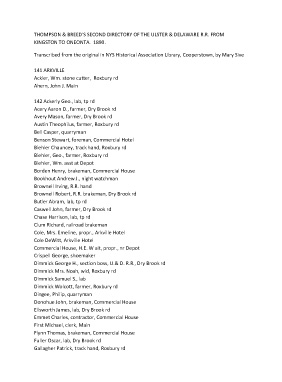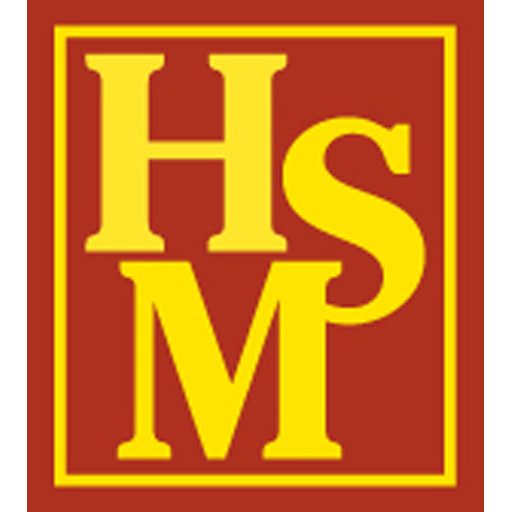

Early medicine topic of March 27 historical society program
The Historical Society of the Town of Middletown (HSM) will present living history re-enactor Stuart W. Lehman on Saturday, Mar. 27, when he will bring a hands-on lecture, “Leeches and Laudanum: Medicine in Early New York,” to Margaretville.
The program begins at 2 p.m. at the Presbyterian Church hall, Orchard St., Margaretville.
HSM members get in free; admission for non-members is $2. For more information, call 845-586-4973 or contact history@catskill.net
Lehman will discuss medicine as it was practiced in the 18th and 19th Centuries. He will bring an exhibit of the herbs, medicines, and implements used from the Revolutionary War to the Civil War. You can take a close look at some fascinating artifacts; however watch out for the leeches!
Explore health care as it was practiced in early America by doctors, midwives, and the everyday housewife. Find out about theories, treatments, home remedies and patent medicines and discover which were surprisingly successful, and which caused more problems than they cured.
Lehman developed his program over many years working at a variety of historic sites, including Schuyler Mansion and Saratoga National Historical Park. He is an Education Coordinator with the Office of General Services where he develops and present programs and conducts research for the New York State Capitol.
Lehman is active in a number of historical associations, including the New Scotland Historical Association, the Friends of Schuyler Mansion and the Capitol District Civil War Roundtable. He lives in Guilderland.
“Remember When” exhibit at Middletown Town Hall
Remember when you could buy a Mexican Sundae at Joe Christian’s Soda Fountain? Remember when hamburger was 49 cents a pound at Bussy’s Store? Or when Stan’s Tavern in Arena and the Cat’s Meow in Fleischmanns were popular watering holes?
If you remember when Flinch and Uncle Wiggly were a way to spend a rainy afternoon, or when you could buy a plaid refrigerator from Doug Kelly of Margaretville, you’ll enjoy the latest history exhibit in the Middletown Town Hall on Route 28, between Margaretville and Arkville.
Town Historian Shirley Davis has put together another fascinating look back at our own times, and an even earlier day, when metal milk jugs, button hooks, and ox shoes predated plastic milk cartons, Velcro and truck tires. Titled “Remember When,” the display features artifacts ranging from kerosene lamps to a Roy Rogers and Dale Evans lunch box, and variety of photographs and advertisements from the early to mid-20th century.
For a look at who went to the Margaretville High School prom in 1963, and how the Flood of 1950 rearranged Arkville, stop by the Town Hall weekdays during regular business hours. “Remember When” will be on view through the end of May.
Cemetery Help Needed
The Historical Society of the Town of Middletown is seeking volunteers to help repair the grounds of the Arkville Cemetery on the Cut-off Road.
A work day is planned for Saturday, May 8 beginning at 9 a.m. If you can help, please contact coordinator Brian Wheaton at 586-2294, or just show up. Please bring shovels, rakes, clippers or chain saws if you have them.
Materials and equipment for the restoration of the cemetery, which dates back to the early 1800s, are being funded by a legislative grant provided by Assemblyman Clifford Crouch to the Town of Middletown. However, volunteers are needed to fill holes, clear brush, trim trees and help right several toppled stones.
New Kingston to get Historic Marker
NEW KINGSTON – The Historical Society of the Town of Middletown (HSM) and the New Kingston Valley Association will unveil a historic marker near the Post Office in the hamlet of New Kingston on Sunday, June 20 at 1 p.m.
Everyone is welcome to the event, which will include remarks by Bill Birns, historical columnist, retired teacher and former resident of New Kingston.
Those wanting a closer look at the picturesque hamlet, which was named to the State and National Registers of Historic Places in late 2007, are invited to take a guided walking tour after the unveiling. A display of photos, artifacts and memorabilia will be on view from 1:15 to 3 p.m. at the New Kingston Presbyterian Church, which is itself on the State and National Registers.
Refreshments will be available at the church.
New Kingston got its name after Chancellor Robert Livingston’s 1782 donation deed of a 5,000-acre tract in the valley to the homeless citizens of the City of Kingston which had been burned by the British during the Revolutionary War. Livingston was an owner of a large section of the 1,500,000-acre Hardenburgh Patent that included the New Kingston Valley. Fifty-acre parcels were given to 100 displaced “sufferers,” but neither the 1790 nor the 1800 federal census shows that any of them took up their lots. Some of their descendants, however, did eventually transplant to the New Kingston Valley.
By the 1840s, Samuel Ackerly, who had acquired some of the valley land, sold pieces of it to members of the Reynolds and Birdsall families, who, between 1855 and 1889, sold most of the house lots that now form the hamlet of New Kingston.
The hamlet became a trading and service community for the many farms that were established in the valley. Today, the last three dairy farms in the Town of Middletown are located in the New Kingston Valley.
